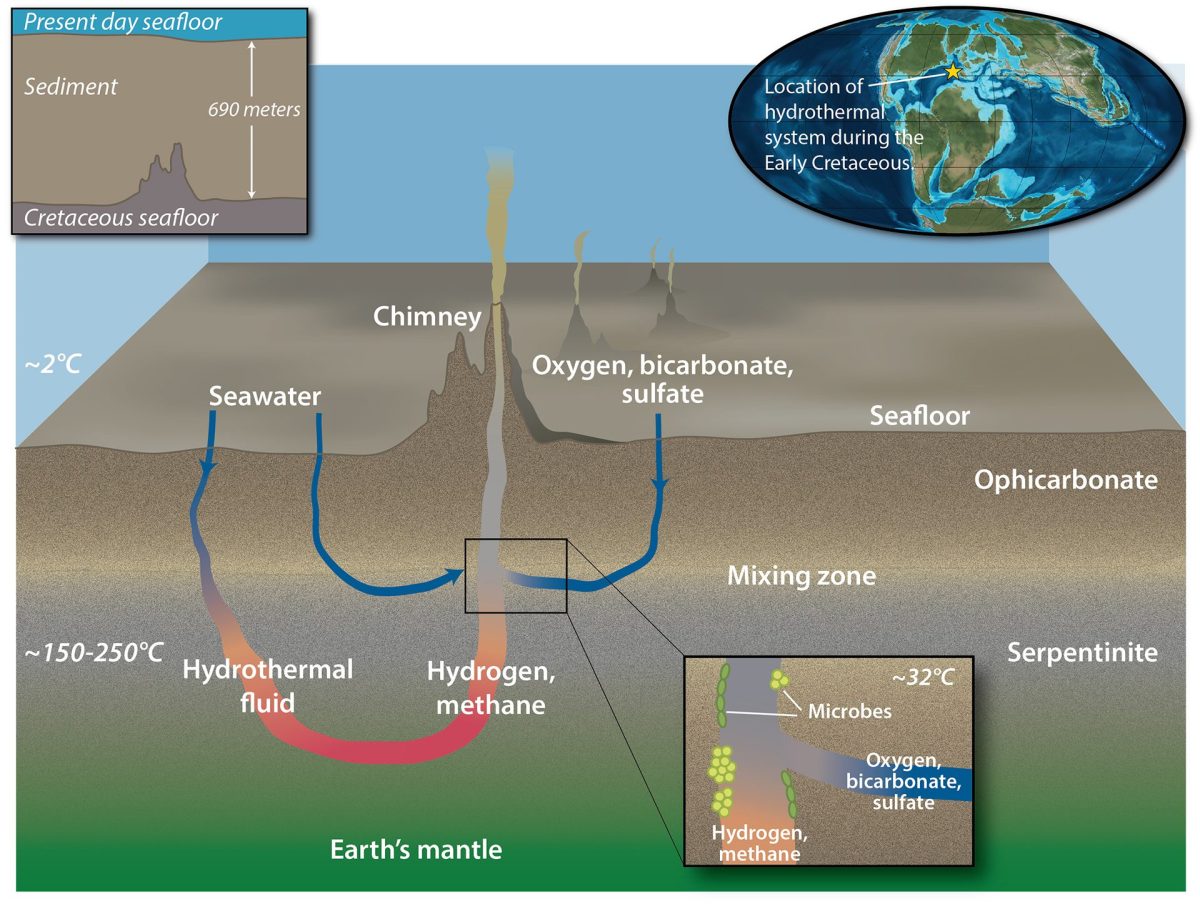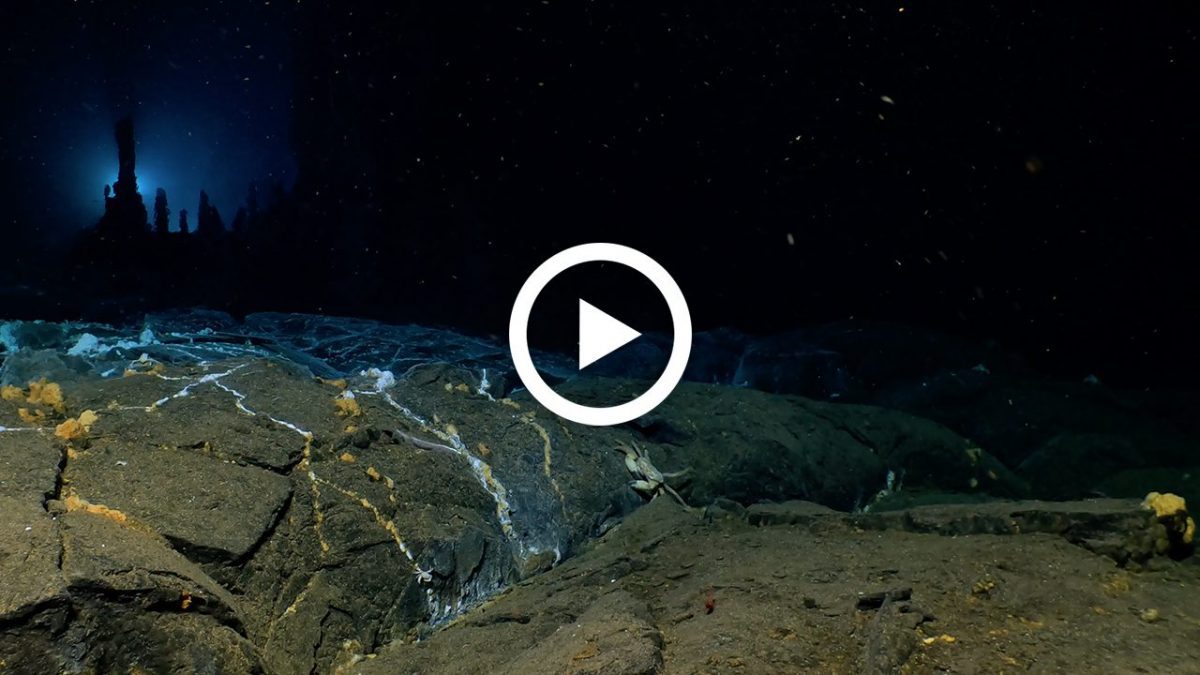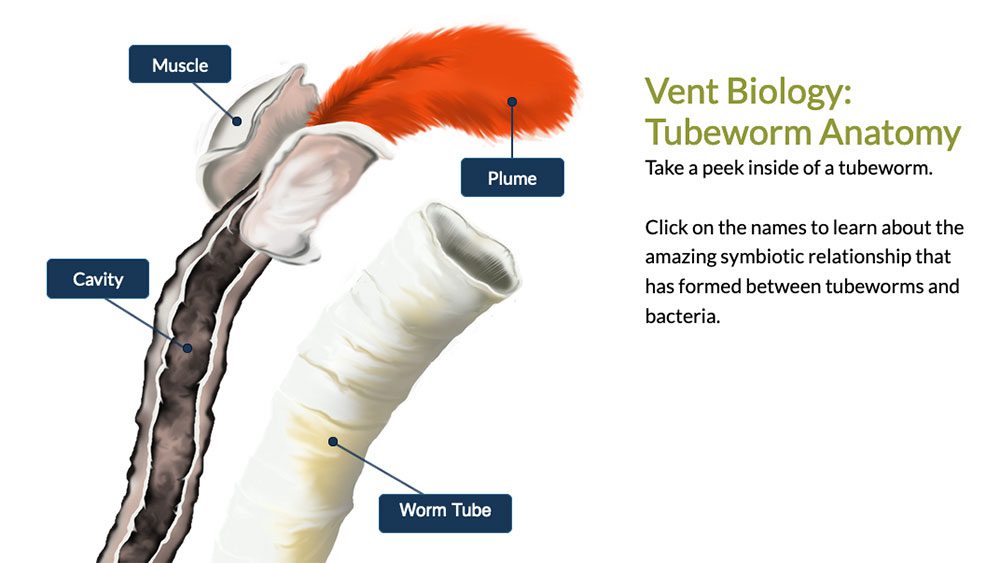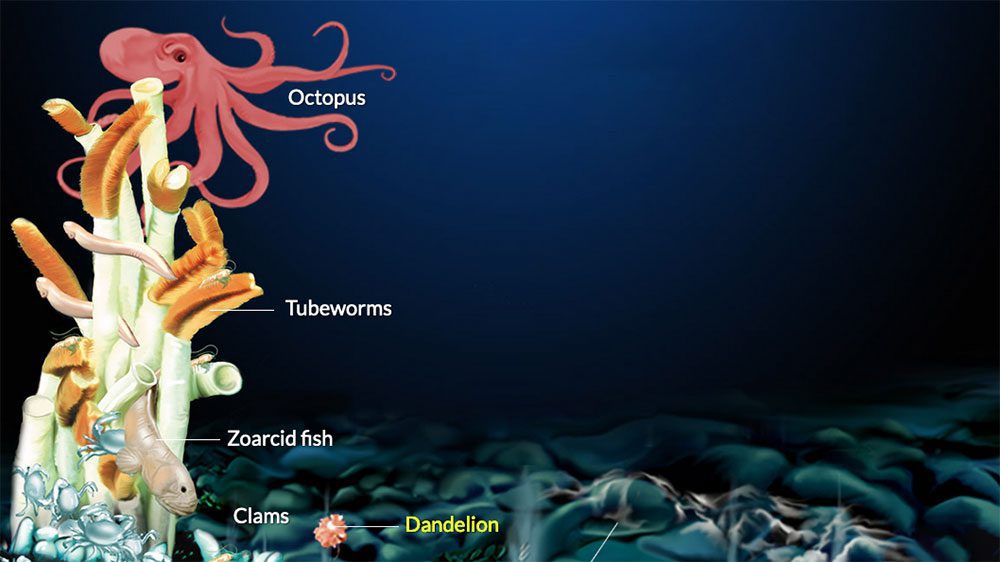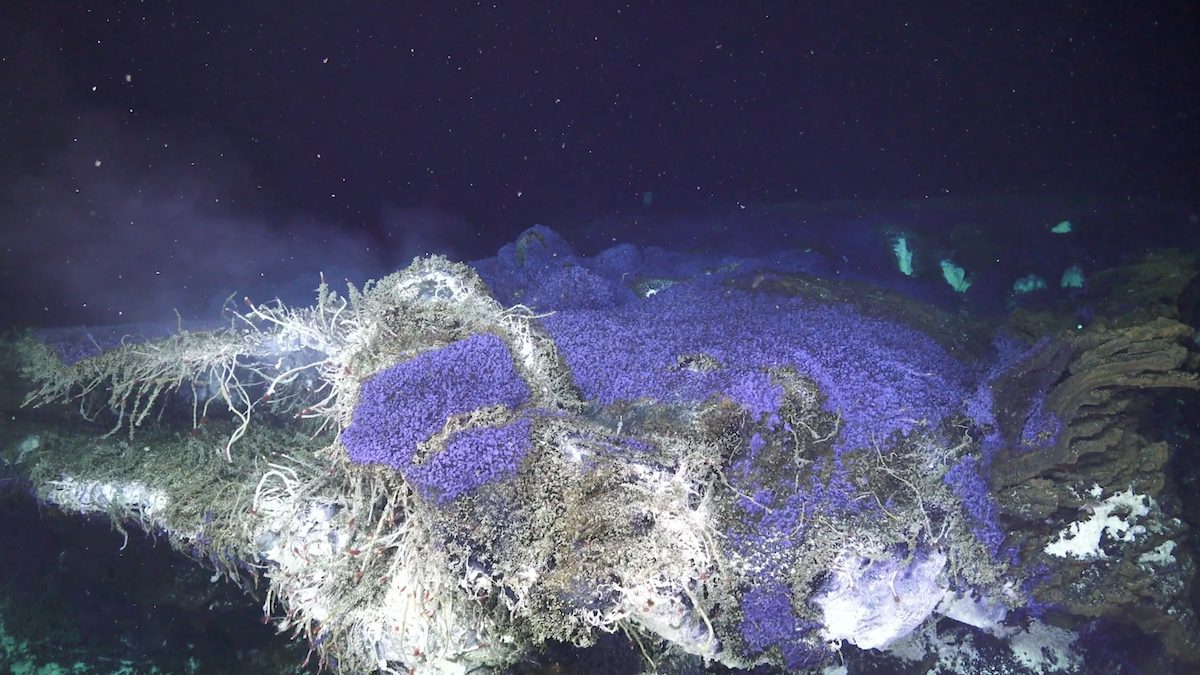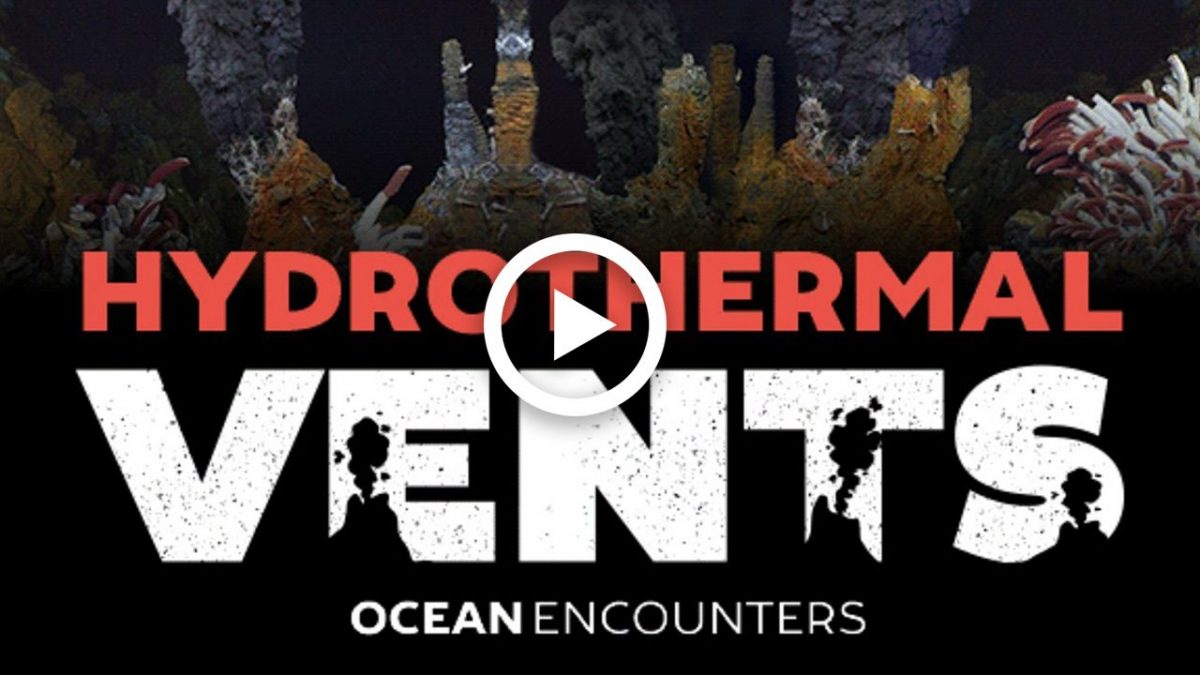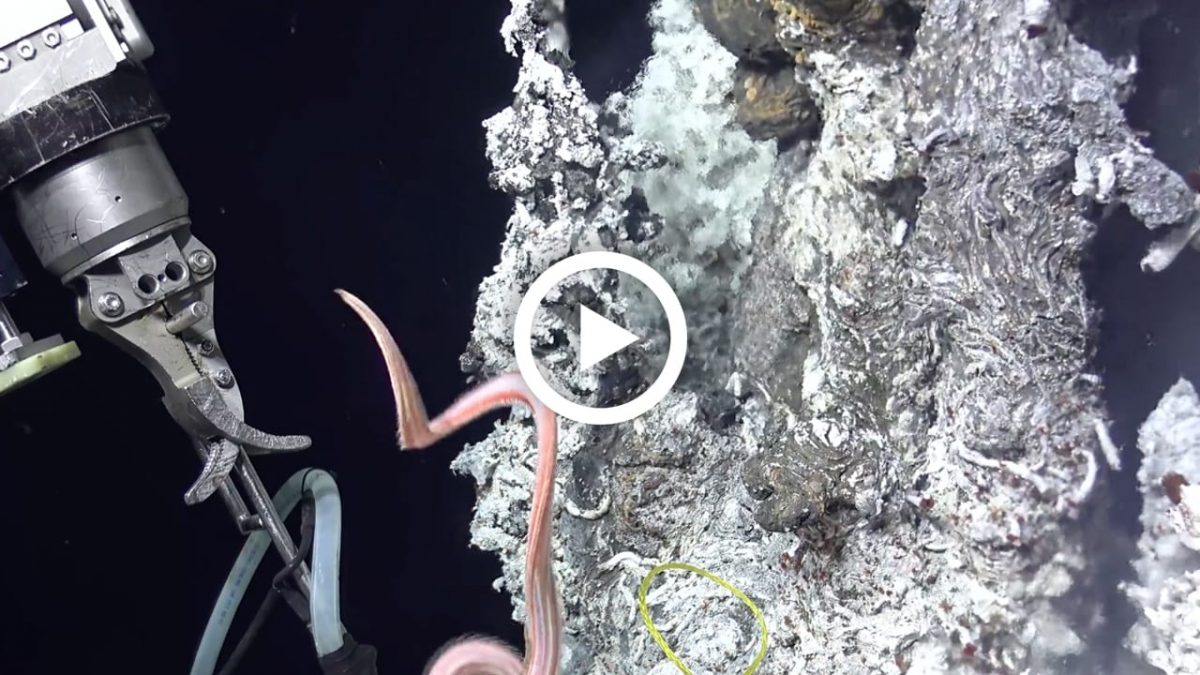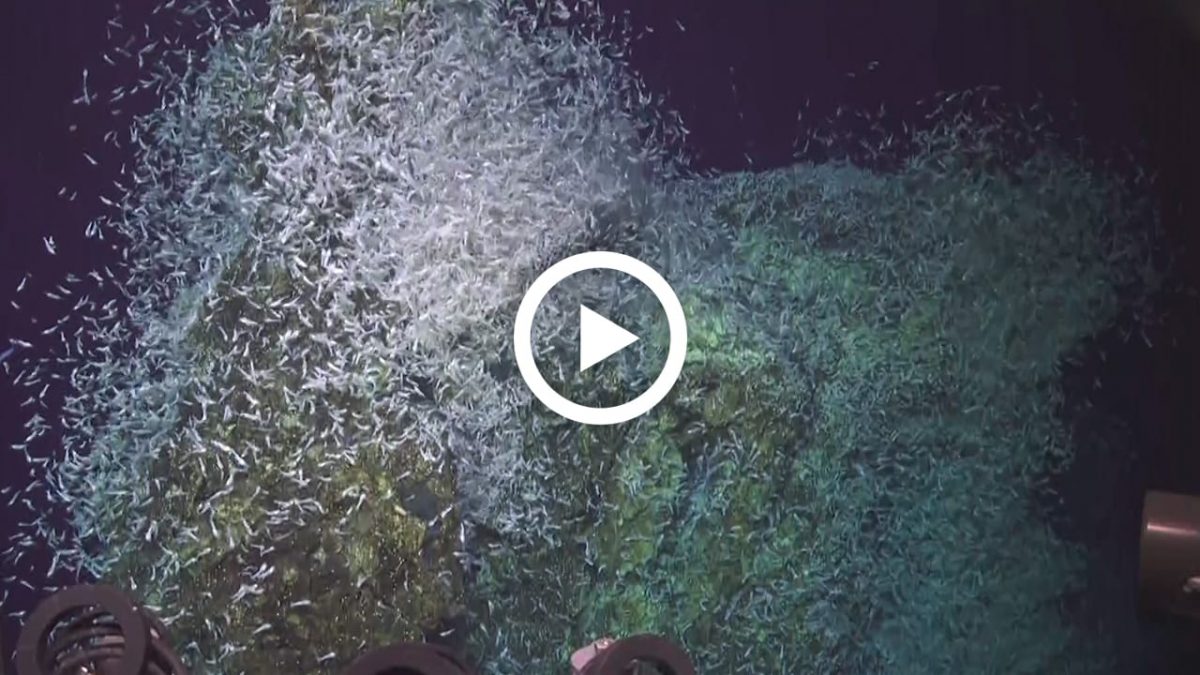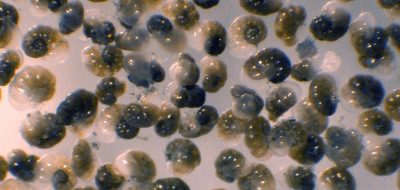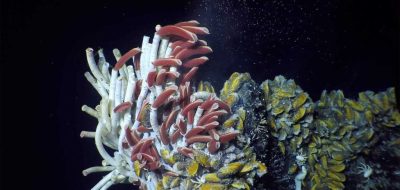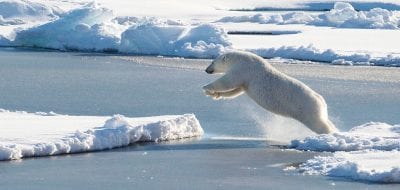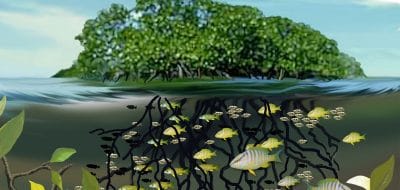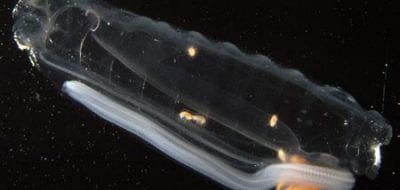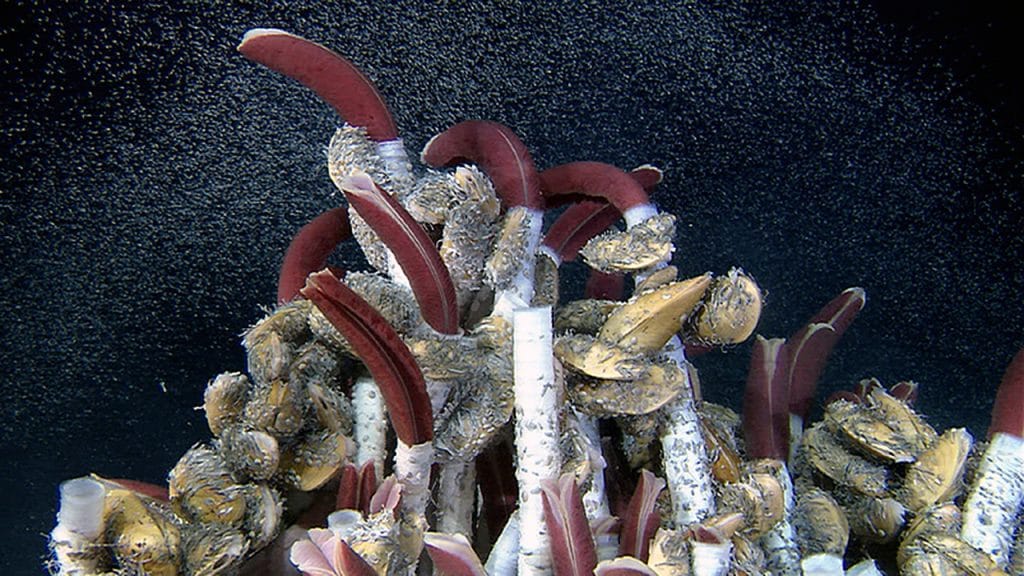
Tubeworms, clams, and crabs at a hydrothermal vent site. (Woods Hole Oceanographic Institution)
What is Life at Vents and Seeps?
Hydrothermal vents and cold seeps are places where chemical-rich fluids emanate from the seafloor, often providing the energy to sustain lush communities of life in some very harsh environments. Cold seeps and hydrothermal vents differ from one another in the underlying conditions that form and drive them. This has implications for the kinds of animals that are able to survive at each.
On land and near the ocean surface, sunlight provides the energy that allows photosynthetic plants to convert carbon dioxide and water into the organic carbon, the fundamental source of nutrients for animals higher up the food chain. Below the photic zone—the sunlit, upper reaches of the ocean—many microbes have evolved chemosynthetic (instead of photosynthetic) processes that create organic matter by using oxygen in seawater to oxidize hydrogen sulfide, methane, and other chemicals present in vent and seep fluids.
Animals such as clams, mussels, snails, and shrimp feed on the microbes, and in turn, provide food for fish and other predators. Some vent and seep animals, such as tubeworms and shrimp, also host chemosynthetic microbes on or within their bodies, providing a place for the microbes to live in exchange for nutrients produced by the microbes.
Hydrothermal vents are driven by heat from volcanism beneath the seafloor. In this environment, chemical reactions take place as seawater percolates through cracks in the seafloor to produce hot (more than 400°C or 750°F), acidic fluids that eventually rise back to the seafloor. Vents, and the ecosystems they support, are created and destroyed as underlying volcanic activity waxes and wanes over tens or hundreds of years. Cold seeps, on the other hand, are less ephemeral and volatile.
They produce a diffuse flow of lower-temperature fluids, often composed of natural gas and a mixture of hydrocarbons, at slower rates for longer periods. Some seeps may be thousands of years old.
What is Life at Vents and Seeps?
The discovery of life at vents and seeps revolutionized understanding of how and where life can exist on Earth. The organisms that thrive at deep-sea vents and seeps have to survive freezing cold, perpetual darkness, high-pressure, and toxic chemicals. For this reason, they are often called extremophiles for the extreme nature of their living conditions.
Studying these organisms expands understanding of how life first took hold and slowly evolved on our planet as well as where it might exist elsewhere in the solar system and beyond. In addition, previously unknown enzymes, molecules, and metabolic processes discovered in extremophiles offer great potential for development into valuable and life-saving biomedical and commercial applications. Enzymes from vent microbes are already being used to enhance the flow of oil extracted from deep reservoirs, for example, and ice-nucleating proteins found in deep-sea organisms are used to make ice cream.
Another example are DNA polymerases isolated from vent life, which can withstand alternating cycles of heat and cold. These enzymes were used to create the polymerase chain reaction, or PCR, the revolutionary process that has allow scientists to quickly generate millions of copies of DNA from a single strand.

